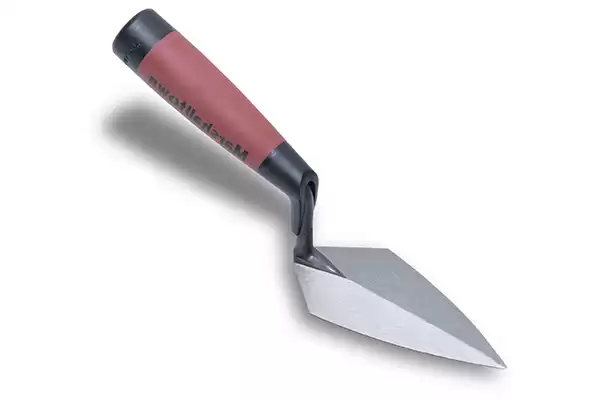When it comes to masonry work, having the right tools is essential for achieving precise and professional results. One of the key tools in a mason’s toolkit is the pointing trowel. However, choosing the best size pointing trowel for your projects can be a bit perplexing. With various sizes available, it’s important to understand how the size of the pointing trowel can affect your work. In this article, we’ll explore the different sizes of pointing trowels, their advantages and use cases, and help you determine the best size for your specific masonry needs. So, let’s dive in and find the perfect fit!
Choosing the Right Size Pointing Trowel
H2: Understanding Pointing Trowel Sizes
Pointing trowels come in a range of sizes, typically measured in inches. The size refers to the length of the blade, which can vary from as small as 3 inches to as large as 7 inches or more. Each size offers distinct benefits and is suitable for different tasks.
H2: Advantages of Different Pointing Trowel Sizes
Smaller Pointing Trowels: Smaller pointing trowels, such as those with 3 to 4-inch blades, are ideal for intricate and detailed masonry work. They provide better control and precision when working in tight spaces or when dealing with delicate materials. These trowels are great for tasks like repairing small cracks, filling joints, or applying mortar in hard-to-reach areas. They allow for greater maneuverability, ensuring you can achieve the desired level of accuracy and finesse.
Medium Pointing Trowels: Pointing trowels with medium-sized blades, ranging from 5 to 6 inches, strike a balance between maneuverability and coverage. They are versatile tools that can handle a wide range of masonry tasks. Medium-sized trowels are suitable for general-purpose pointing work, such as filling larger gaps, applying mortar, or pointing bricks and stones. They provide a good blend of control and efficiency, making them a popular choice among masons.
Larger Pointing Trowels: If you’re working on larger-scale masonry projects, such as installing bricks or laying stones, a larger pointing trowel with a blade size of 7 inches or more can be beneficial. These trowels allow for quicker coverage of larger areas, reducing the time and effort required to complete the job. They are particularly useful when spreading mortar or leveling surfaces. However, they may be less suitable for intricate or detailed work due to their larger size.
H2: Determining the Best Size for Your Projects
The best size pointing trowel for your projects depends on the specific requirements of the task at hand. Consider the scale of the project, the intricacy of the work, and the type of materials you’ll be working with. For fine and detailed work, such as repairing small cracks or working in tight corners, a smaller pointing trowel would be the more appropriate choice. If you’re working on general pointing tasks or larger-scale projects, a medium-sized trowel strikes a good balance between control and coverage. For bigger jobs that require fast and efficient mortar application or leveling, a larger pointing trowel can be advantageous.
Conclusion
When it comes to selecting the best size pointing trowel, there is no one-size-fits-all answer. It depends on the nature of your masonry projects and the level of precision and coverage required. Smaller trowels offer greater control for intricate work, medium-sized trowels provide versatility, and larger trowels excel in larger-scale projects. Assess the specific needs of your project and choose a pointing trowel size that aligns with those requirements. Having the right size pointing trowel in your hands will help you achieve the desired results and enhance your masonry craftsmanship.
Post time: Feb-20-2024







